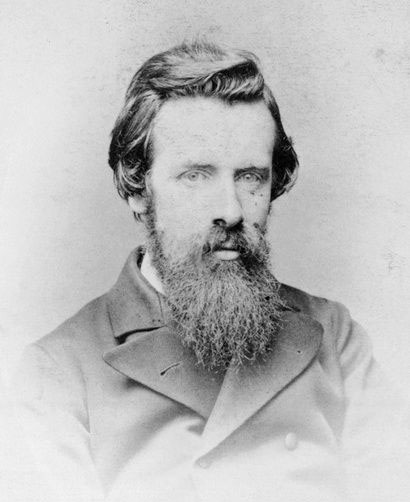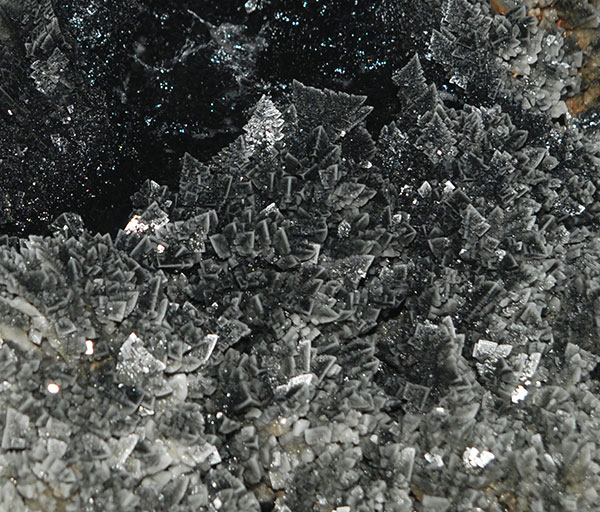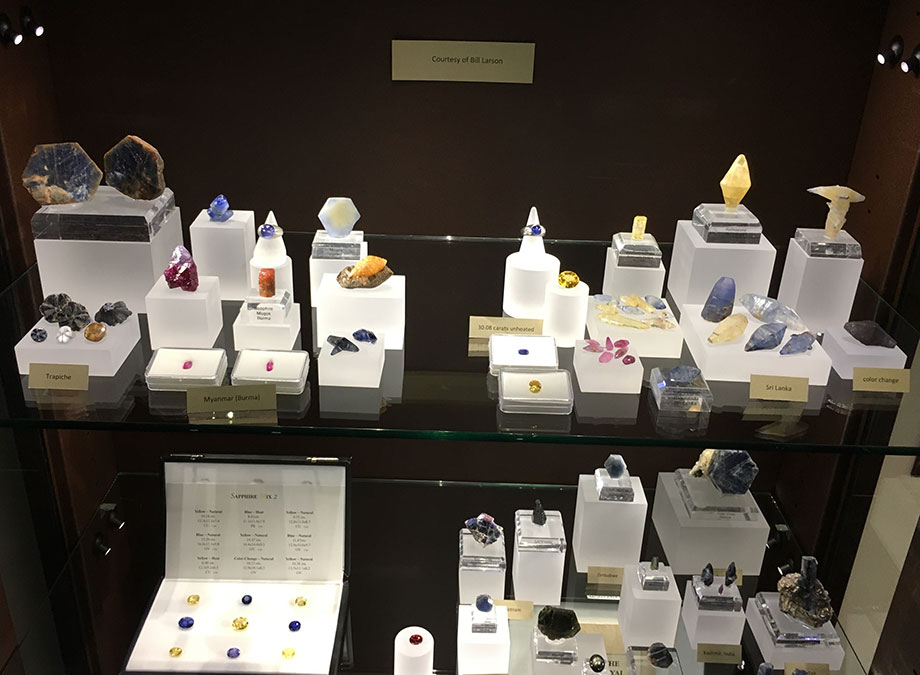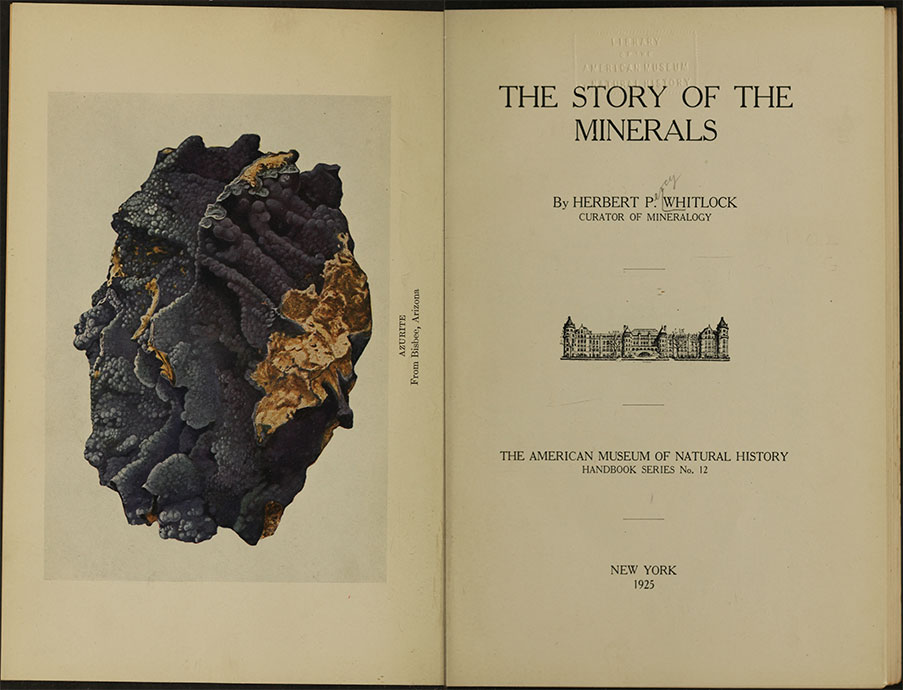June 2017
Our look at halite crystals from a Polish copper-halite mine below sent us browsing for other salt mines in the country. This is the Wieliczka mine with its famous chapel, as presented in a come-on for film location scouts.
Table of Contents
Shows and Events
Pala International News
Minerals and Mineralogy News
Industry News
Recycle Bin
Pala Presents
- The Collection of Minerals in the American Museum of Natural History
by Herbert Percy Whitlock
For Fun…
Editor: David Hughes
Shows and Events
Mineral & Gem à Sainte-Marie-aux-Mines: June 22–25, 2017
The 54th Sainte-Marie show will be held June 22–25, with the first two days limited to the trade only. This year Bill and Will Larson will attend the show along with friend and fellow gem dealer Mark Kaufman.
Cultural activity details for 2017 have been posted on the website. (You can easily translate websites using the Chrome web browser or Google's translation tool.)
- The Prestige Exhibition again is curated by our friend Alain Martaud under the title Geodes and Fumaroles: The Minerals of Volcanism. The activities of volcanoes and their cousins—fumaroles or, mm…, fume-holes—have created new mineral species, perhaps the most famous being Vesuvianite. This exhibition explores these minerals that hail from multiple continents.
- Special Exhibitions:
- "The Blossoming of Life" in which master lapidary Victor Tuzlukov asks, "We create the world around us. Like a mirror, it is the reflection of our actions. Do we want to create a world that resembles a bustling garden or a field full of weeds?"
- "Crystal Hunters's Treasures," the results of great effort by intrepid crystal hunters.
- Lectures: (all are delivered in French)
- "Submarine Volcanism: Oceanic Dorsals and Hot Points" by Eric de Carlo, PhD in geology and geochemistry, Thursday, 11 a.m.
- "The Crystals: 2,500 Years of Science History" by Bertrand Devouard, Mineralogist and President, French Society of Mineralogy and Crystallography, Thursday, 1:30 p.m.
- "The Crystal: Emergence of Symmetries" by Jean-Luc Jacquot, doctor of physics and sciences, Thursday, 3 p.m.
- "The Mésage Mine and Its Mineralogy" by Grégoire De Bodinat, crystallier, Friday, 11 a.m.
- "The Saint-Louis Mine, 30 Years of Shared Passion" by Pierre Fluck, geologist and doctor of sciences, Saturday, 11 a.m.
- "From Earth to Bijou" by Éloïse Gaillou, assistant curator of Musée Mines ParisTech, Saturday, 1:30 p.m.
- "The Discrete Seduction of Black Gems" by Isabelle Reyjal, gemologist, Saturday, 3 p.m.
- "A Life of Passion for the Cailloux" by Alain Carion, expert and merchant of meteorites, Sunday, 11 a.m.
- "Demantoid Green: A Precious Stone" by Pierre-Yves Chatagnier & David Goubert, gemologists (Gem-A, DUG) and dealers in precious stones, Sunday, 1:30 p.m.
- "The Pearls of the Vologne" by Marie Cabrol, gemologist and independent journalist at Le Gemmologue, Sunday, 3 p.m.
- The Symposium takes place Friday, June 23, in English with free admission but limited to only 50 seats, so reservation is required. Topics:
- "From the Treasure of the Great Moghols to the Extravagances of the Maharajahs" by Capucine Juncker, gemologist and journalist at www.propertyofalady.fr
- "The Cabinets of Curiosities in Museums: Collections to Modern Science" by Cristiano Ferraris, curator at the National Museum of Natural History in Paris
- "The Collection of Sir Arthur Russell at the Natural History Museum of London" by Mike Rumsey, curator at the Museum of Natural History in London
- The Gem Fashion Show theme this year is "The Thousand and One Gems…"
- Several Workshops are offered including some for children
Visitors can expect more than a thousand exhibitors and can check out the Sainte-Marie webcam.
Denver Fine Mineral Show: Sept. 13–16, 2017
Pala International will exhibit at the fourth annual Denver Fine Mineral Show in nearby Golden. This year the Fine Mineral Show overlaps with the 50th Annual Denver Gem & Mineral Show at the Denver Mart Expo Hall, September 13–16.
Cover star for the Denver Fine Mineral Show is a 6-inch-tall citrine quartz on smoky quartz, photographed by Tom Spann. It was collected by George Fisher quite some time back from the Fisher Claims in Park County, Colorado.
- When: Sept. 13–16, 2017
- Where: Denver Marriott West, 1717 Denver West Bl., Golden
- Room 219
- Hours:
Wed.–Fri.: 10 a.m.–6 p.m.
Sat.: 10 a.m.–5 p.m. - Admission: Free and open to the public
We look forward to seeing our many friends there.
Visit the Pala International Show Schedule for future events.
While in the Denver Area…
- In Golden be sure to take in the Colorado School of Mines Geology Museum. For more on the museum, see "Glittering in Golden" from our April 2016 newsletter.
- In Denver visit the Coors Mineral Hall of the Denver Museum of Nature and Science.
A hundred miles west of Denver is the National Mining Hall of Fame & Museum. Take a leisurely drive through mining towns like Georgetown along the way, take in the fall colors and some tasting at the world's highest distillery before arriving at the country's highest incorporated city.
Pala International News
Pala's Featured Specimen
Golden Topaz from Sakangyi, Mogok
This topaz is a spectacular gem sure to impress veteran and novice collectors alike. The color shifts from peach to cognac as you fumble it around in your hands. You even pick up some interference-colors flashing off of the internal features. It has a beautifully symmetrical crystal form with sharp edges and glassy faces. There is some damage on the bottom, but it hardly takes away from the impressive feel of the crystal. Savvy readers will recognize our featured mineral specimen as one we offered exactly six years ago.
All that glitters is not gold. Topaz from Sakangyi, Mogok, Burma, 8 x 7 x 5.5 cm. (Photo: Mia Dixon)
Interested? Contact us.
Mineral and Mineralogy News
New at the Virtual Museum
It's been two years since we heard from the Virtual Museum of the History of Mineralogy. Between 2007 and 2015 the museum announced its acquisitions on a fairly regular basis and now expects to do so going forward.
New to the museum are several hand spectroscopes by R & J Beck, John Browning, Watson & Sons, and Carl Zeiss (links are found in the May 2017 newsletter).
The museum also advises that many of the entries in its book collection can be obtained in digital form via the Internet Archive as well as Google Books, both of which often are used by your editor here.
"Grace's Spectroscope." We like the nifty external watch-spring mechanism on this large (15 cm) straight-hand spectroscope by John Browning, London. It is made of Zapon-lacquered and -blackened brass with an adjustable gap and 5 prisms. Two more views available. (Photo courtesy the Virtual Museum of the History of Mineralogy)
John Browning. (Photo Royal Astronomical Society – SciencePhotoLibrary)
John Browning's lifelong love affair with light had many aspects. According to his Wikipedia profile he was born into a nautical-instrument maker's family in England but became the leading manufacturer of spectroscopes, providing photography innovator (and Daguerre rival) Henry Fox Talbot with a custom model. The second edition of his classic How to Work With the Spectroscope (1882) reproduced John Rand Capron's "rainband" spectrum illustration in vivid color.
Browning installed the first electric light in London, although it was a cumbersome affair. The occasion was the 1873 visit of the Shah of Persia to Queen Victoria. A banquet was held in Guildhall, sponsored by the City of London Corporation. (It being a business affair, the Queen opted out.) Outside each window of the hall was positioned an electric light powered by Bunsen cells that gave off biting fumes of nitrogen dioxide. Such extravagance: each light—their surely were dozens—cost £3 an hour to operate!
Browning went on to involve himself in telescopes (employing spectroscopes) and bringing respect to optometry. Oh, and he built the first wind tunnel, based on Francis Herbet Wenham's design.
Life on Land
For the last few years Western Australia has been the site of some discoveries of oldies but goodies. In 2011 microfossils found in the landscapes of the Pilbara in northern Western Australia were identified as being from bacteria that lived off of sulphur—with no need of oxygen. (See our "Tiny fossils (tiny fossils)/ In the brine….")
Then in 2014 a Western Australia sheep ranch turned up what scientists at the time were calling the oldest crystal ever to be verified—at 4.4 billion years old. (See our "Terra Antiqua: Fire and Water.")
Last month, piggybacking on (or leapfrogging over) the 2011 study, scientists claimed to be filling a needed gap. A new study published in Nature Communications acknowledges that the Pilbara is "well known for hosting some of Earth’s earliest convincing evidence of life… within a dynamic, low-eruptive volcanic caldera affected by voluminous hydrothermal fluid circulation." But missing from that picture had been surface manifestations of the hot springs and geysers linked to that life.
The link is made—or at least posited—in the new study "Earliest signs of life on land preserved in ca. 3.5 Ga [giga-annum; billion] hot spring deposits."
Scale bar measurements indicated. (a) Strongly curving isopachous barite veins envelop a chert wedge (W), overlain by sedimentary units (DFs). Scale bar, 1 m. Inset box of (b) isopachous layered barite underlies DFs that include stratiform geyserite. Inset box of (c) barite crystal tops growing upward into DFs (arrows). Scale bar, 2 cm. (d) Modern collapsing hot spring-pool lip edge, shoreline of Lake Rotokawa, Rotokawa geothermal area, New Zealand. Scale bar, 0.5 m.
A lay explanation of the study in the online science journal Seeker states that the new study not only is a step toward solving the "mystery of how life evolved" on our planet but could "provide clues for scientists searching for extraterrestrial existence." Did life originate in the ocean or on land? That debate of that question now has new fuel.
Jolly Good Fellows
For nearly a decade now generous donors have helped Mineralogical Record expand its coverage of the world of minerals through its Fellows program. A year ago Tom Gressman, the journal's Development Officer and Associate Publisher, described how the program, begun in 2009, had increased the publication's page count from 503 in 2007 to 912 in 2015. The count last year was 792 (not including the participant-funded 460-page North West supplement).
Gressman told us that 12 Senior Fellows (one is deceased), 3 Sponsoring Organizations, and 61 Fellows keep this venerable publication, which turns 50 in 2019, sustainable rather than diminished. Beginning in 2015 the group held its annual Fellows Breakfast at the Westward Look Resort in Tucson, kindly underwritten by Gail and Jim Spann, allowing some who never had met each other to become acquainted.
Interested parties—including couples—can contact via the information contained in the Fellows document pictured here.
Industry News
Stairways to Heaven
Late last year geologists browsed an old tunnel in southwestern Poland's Sieroszowice copper-halite mine located in the Lubin-Głogów Copper District. The tunnel was off the beaten track of the mine's operations and reaching it took much time and effort, but it paid off in hundreds of green "skeletal" halite (rock salt) crystal specimens. The story of the find is told by the Polish Spirifer Geological Society in much detail, liberally illustrated, including photos of the mine's operations, geographical reconstructions, shaft diagrams, crystal morphologies and, of course, intriguing images of the mineralogy.
Forests of upturned stalactitic forms greet the viewer, paired with snowy evergreen-like stalagmites, some nearly connecting with each other, Creation of Adam-like. A closer look shows the crystallography to be virtually fractal: the fir-like shapes in macro size (above) mirror the tiniest minis (below).
Many of the collected specimens look like crazy jadeite carvings: Stairways to Heaven? With all this beauty to behold and to be had, the Spirifer tale of the tunnel ends on a somber note: "According to the estimated growth time, it seems that about 500 specimens may be collectable before the tunnel gets destroyed."
O Tenenbaum. Skeletal halite crystal from the Sieroszowice mine. Size 5 cm. Spirifer Minerals specimen. (Photo: M. Wikiera)
Read "New find of skeletal halites in Sieroszowice mine, Lubin-Głogów Copper District, Poland" by Tomasz Praszkier.
The Redland of Greenland
Ruby mining at Greenland's Aappaluttoq mine has begun again. You may have heard of the operation over the years, conducted by True North Gems. The potential was staggering, with 29 deposits identified in 110 square kilometers and the immediate vicinity. One of those deposits, Aappaluttoq (Big Red in Greenlandic), has an inviting geological profile, as explained by Greg Davison in this segment of an 8-part corporate report (all worth watching). The deposit has a folded structure which repeats the same gem-rich sequence. Pretty impressive. Nevertheless True North Gems went bankrupt last fall.
National Jeweler reported on May 26 that mining now is being conducted by Greenland Ruby A/S with the involvement of Norway's LNS Greenland, but the bankruptcy proceedings of True North Gems continues to proceed.
The Kitaa Ruby rough, 440 carats of gem and near-gem material, was discovered in 2005 on the "lakeside" during True North Gems sampling of corundum-bearing territory. It was believed to be the largest ruby found and documented in the Western Hemisphere. Having no potential for faceting, True North Gems chose to commission British Columbia sculptor Thomas McPhee to carve it. The design marries Greenland's Inuit traditions with its Norse heritage, as reported by Rapport. The carved weight is 302 carats and took more than ten months to execute.
Ratnapura Ravaged
As can be seen in the photographs of Bill Larson's display of sapphire crystals at this year's Sinkankas Symposium (below), Sri Lanka produces fine specimens. But now the island nation is in trouble.
The country's "City of Gems," Ratnapura, has been inundated by flooding rain in the last week, as reported by Associated Press, The Guardian, and the UN Resident Coordinator for Sri Lanka.
Kiribathgala Hill, in the Ratnapura district, collapsed in part, burying fifteen homes and two dozen inhabitants. The rain comes in the wake of Tropical Cyclone Mora in the Bay of Bengal. All in all at least 180 people have been killed.
Recycle Bin
As we often do, here we offer items from our sibling e-publication, Palagems Reflective Index.
Sapphire Symposium
Be liberal with the Pause button. This streaming video includes all slides from Carl's PowerPoint presentation but does so in a speedy 1 minute 9 seconds!
On April 8 GIA played host to the Fourteenth Annual Sinkankas Symposium on the subject of sapphire. Pala International's Carl Larson joined what we called "a stellar cluster of scholars" in presenting on the topic. For profiles of the speakers and titles of the talks see the symposium website. As always the proceedings will be published; check the website later for details.
Symposium presenters, gathered around the statue of Richard Liddicoat, for whom GIA's library is named, from left: Edward Boehm, Lisbet Thoresen, Richard W. Hughes, Dr. George Harlow, Dona Dirlam (GIA library director), Carl Larson, Dr. William "Skip" Simmons, Robert Weldon (kneeling), Shane McClure, Glenn Lehrer, Dr. George Rossman, Alan Hart, Nathan Renfro, and Dr. John Emmett. Click to enlarge. (Photo: Gloria Staebler)
And, of course, what would such a symposium be without some illustrative eye candy, both rough and cut? Pictured below is the three-tiered display provided by Pala International's Bill Larson and beautifully arranged by Terri Ottaway and McKenzie Santimer. Click each image to enlarge. (Photos: Carl Larson)
This display includes Bill Larson's copy of The Royal Gem, which we reprinted in 2014.
Pala Presents
The Collection of Minerals in the American Museum of Natural History
By Herbert P. Whitlock, Curator of Mineralogy
With Pala Presents, we offer selections from the library of Pala International’s Bill Larson, who shares some of the wealth of information in the realm of minerals and mineralogy.
In 1926, when the third, revised edition was issued of the 1919 introductory pamphlet to AMNH's minerals collection, its author Herbert P. Whitlock was entering the second third of his twenty-three years as Curator and Chairman of the museum's Department of Mineralogy. According to Wendell Wilson's profile of Whitlock, when he took the post in 1918 he turned from the study of mineralogy to the promotion of the field. Childless and having become a widower the next year, Whitlock made a habit of spending Saturday mornings in the museum's Morgan Hall of Minerals and Gems engaging with visitors, then delivering popular lectures in the afternoons. As Whitlock states in The Collection of Minerals, regarding books, only so much can be learned from them:
The knowledge which enables one to recognize a mineral at sight is similar to the knowledge which enables one to recognize a friend. It is a composite realization of a number of characteristics, no one of which is sufficiently definite and unique to be relied on without the aid of some of the others.
Thus on Saturdays Whitlock was known to give away surplus specimens from his own collection to youngsters who identified them correctly.
Frontispiece from The Collection of Minerals, 1926. Cerussite from Broken Hill, New South Wales. A net work of delicate, interlaced crystals.
Whitlock's ability to hold his audience during lectures is reflected in this "leaflet"—actually a thirty-two-page pamphlet—The Collection of Minerals. He begins with statistics: that the museum's collection contains specimens of most of the 1100+ known minerals (there now are nearly five times that many). He explains that color and luster can take one only so far in identification; crystallography also must be considered. He then turns to the history of the collection, followed by mineral classification and the statistic that bears repeating: 97% of the earth's surface layer is composed of only eight of the "80 or more" known elements (there now are 94 that occur naturally).
While the pamphlet is a guide to the Morgan Hall's layout, his descriptions of the contents somewhat supersede any rearrangement that might have taken place in the last ninety years. The minerals are discussed as follows: Elements, Sulphides, Haloids, Oxides, Carbonates, Silicates, Phosphates, Sulphates, Tungstates/Molybdates and, given the location of the museum itself, The Minerals of Manhattan Island. "Practically every species of the long list recorded from Manhattan Island is included in this series," Whitlock writes, "which is not only large and representative, but contains many specimens of a quality which renders them noteworthy apart from their unusual local interest."
Although Whitlock advised the study of collections over that of books, he did author both academic and popular volumes. The latter titles include The Story of the Minerals (1925, above), The Art of the Lapidary (1926), The Story of the Gems (1936), and The Story of Jade (with Martin L. Ehrmann, 1949, the year after Whitlock's death).
For Fun…
Again, in our saline browsing this month we ran across this deep house number "Salt Mines" created for free download by Meizong and reposted here with an image not of a salt mine but rather the Mir diamond mine in Siberia.
— End June Newsletter • Published 6/2/17 —
We welcome your feedback.


















